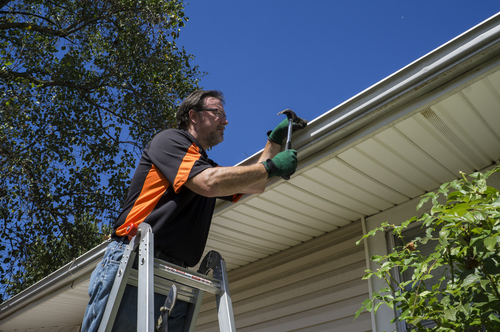Everyone knows that roof gutters occasionally clog up. What you may not be aware of is why or how they clog. You also may not know the full story about the possible risks of clogged gutters or how to stop problems before they become serious issues.
That’s where this article comes in.
Roof Guttering Clogs – Causes and Effects
The causes of clogged gutters need to be understood to help understand how to fix them.
- Roof guttering doesn’t just take water from the roof. It also takes all the dust, debris and everything else. These very fine sediments are almost invisible, but they grow into significant deposits in the guttering, like mud, which will also block the movement of other pieces of debris. The “beaver dam effect” means that more materials build up in the guttering. (If you’ve ever wondered how so much debris can accumulate in a relatively small gutter, this is how. Guttering can accumulate incredible amounts of sediment deposits in less than a year. It’s a lot of hard work to clean.)
- Some materials are much worse than others. Sand, which is wind-blown everywhere in Australia, is very common and a large part of the materials deposited on roofs. These fine, sharp particles actually scratch and damage guttering at a microscopic level. Add fast moving water, and the damage increases. Old, rusty gutters can literally be filed down over time and rusty weak points may give way under the constant scratching and pressure of water.
- Tree debris is a real problem. You wouldn’t think that a few leaves would be that much of an issue until you realise that they can cause instant clogs, which force water to flow through any available space. The leaves, twigs, etc. will cause water to flow into any gaps in roofing. The result is potentially very expensive leaks and remedial work.
Fixing Your Guttering Problems
Fortunately for homeowners, if the problems are serious enough, the fixes are easy and straightforward:
- Keep your roof as free from debris and sediments as possible. You can hose down a roof to remove dust, sand and dirt, but be sure you don’t have any roof leaks first.
- Keep an eye on your flashings for any issues. Faulty flashings can make leak issues much worse, so inspect them after any rain for possible problems.
- Check the guttering regularly, particularly after storms, for any new debris. This is quick, easy, and will prevent water getting stuck due to obstacles in the guttering.
- Install gutter guards: Gutter guards are cheap, easy to install, and very effective. Take your pick from mesh, plastic and other gutter guard options, but continue to keep an eye on the guttering for any new debris or materials in the gutter.


